In land cases in the category of adverse possession, eviction, or opening the way for servitude obtained by statute of limitations
There are always issues that must be considered.Possession or use of that land It is an action based on discretion. or it is hostile possession
This is because these two cases are similar. But the results will be very different
That is, If it is living on the land or using it in dispute, no matter how long you live in it or use it, you will not have ownership or legal servitude rights.
But if it is living in the land or using the disputed land by the adversary If done continuously for 10 years, ownership or servitude rights will be obtained according to law.
(P.C.M.1382 and Section.1402)
The diagnosis is that Residents of the land or users of the dispute Residing by virtue of rights, by virtue of discretion, or by living in hostility with the intention of owning It is a diagnosis of the intentions within the hearts of both parties. Therefore, the diagnosis must be made from their actions towards each other. According to the principle that karma is an indicator of intention. According to the Supreme Court’s judgment that ฎ.956/2552
Today I have collected 3 principles in the decision of the Supreme Court. The most common ones are as follows.
1.Relationship between landowner and user
If it appears that the owner of the land and the person using the land or the dispute They are related as relatives. There is closeness to each other. or are close friends or have a relationship in a favorable manner We spoke to each other before.
Or the nature of the property is inheritance property that has not yet been divided. and has been used among heirs or it is collectively owned property that has not yet been divided and has been used among the owners.
Like this The Supreme Court often reasons that It will make it believable that the reason for entering into the disputed land or the reason for using the disputed land. It’s because of intimacy. Relying on kinship based on consent Therefore it is not a life of hostility.
But if it appears that the owner of the land and the person using the land or the dispute There is no related relationship as relatives. There is no intimacy. Or maybe they didn’t know each other before. Or to the point of being enemies or having conflicts with each other.
That the person has been in the disputed land or has relied on the disputed land for use for more than 10 years, even though they do not know each other. There is no relationship with each other. Or even to the point of being enemies with the land owner It is believable that it would be like living as an owner yourself. Living without respecting the rights of the owner or hostile to the owner.
Examples of Supreme Court judgments
ฎ.883/2552 The third defendant is familiar with the plaintiff’s mother company as neighbors who depend on each other.The use of the disputed road by the 3rd defendant and his subordinates was with permission from the land owner. As for the 3rd defendant’s claim that he destroyed the fence separating the land of the 2nd and 3rd defendant and Carrying materials and equipment to build the third defendant’s house and continuously using the disputed road, including bringing gravel land and rocks to fill in the disputed road every year without asking the plaintiff’s permission. It shows that the 3rd defendant has used the disputed road as an enemy of the company or the plaintiff. Therefore, it can be considered that the destruction of the 3rd defendant’s fence was for the convenience of transporting materials and equipment for building a house for the 3rd defendant. As for the removal of laterite soil And the stones were added in the dispute to facilitate the use of the dispute by the 3rd defendant. Such behavior is considered to be the discretion of the 3rd defendant only, not an indication of intent to use the dispute in an opposition to the company or the plaintiff. But somehow it doesn’t. As such, even though the 3rd defendant has used the dispute for more than 10 years, it does not cause the dispute to become a servitude to the 3rd defendant’s land in any way.
ฎ.3493/2545 The plaintiff and the four defendantsBeing relatives The plaintiff has been using the disputed road since it was a rice field. Later, when shrimp ponds were dug, The disputed road was changed to be used as a pond embankment. When it was rice farming season, people would walk on the embankment. But if it’s outside the rice farming season, you may walk through the rice fields. Therefore, it is uncertain which route to take is the most convenient. In particular, each person can walk through each other’s rice fields in a dependent and respectful manner, which reflects the true way of life of rural people who normally use neighboring land as a path. By relying on the relationship of relatives or familiarity as an important aspect, which is mutually beneficial, it cannot be considered that the plaintiff uses the dispute in an adversarial manner according to the Civil and Commercial Code, Section 1382, even though the plaintiff uses the dispute. Through the land of the four defendants for more than 10 years, the dispute did not become a matter of servitude according to the Civil and Commercial Code, Section 1401.
ฎ.5133/2537 The plaintiff is in possession of the disputed land by virtue of the rights of the plaintiff’s mother. It is possession of the disputed land on behalf of the plaintiff’s mother, who is the owner. Not holding on as the owner No matter how long the plaintiff has occupied it, he cannot claim adverse possession against the plaintiff’s mother, who was the original owner of the disputed land, and the defendant, who is the owner of the disputed land, who has transferred ownership from the plaintiff’s mother. The plaintiff therefore did not obtain ownership of the disputed land by possession according to the Civil and Commercial Code, Section 1382. The plaintiff’s request at the end of the suit contained only a request regarding adverse possession. There was no request for enforcement regarding the defendant’s use of fraud to deceive the plaintiff’s mother into transferring ownership of the disputed land to the defendant at all, even though the facts as the plaintiff appealed to the Supreme Court were determined that the defendant used fraud to deceive the plaintiff’s mother into transferring ownership of the disputed land to the defendant. It does not change the outcome of the case. Such factual problems are therefore not material to the case which should be decided.
ฎ.4345/2536 The plaintiff and the plaintiff’s family use the road on the defendant’s land. It has been out in public for more than 10 years, but before 1955, the owners of said land were all in the plaintiff’s family. Using the road during this period is therefore Requesting to live among relatives or by virtue of discretion, therefore, could not receive servitude. But since January 5, 1955, the S. sold the said land to outsiders and there was a further transfer. Until the defendant, who received the transfer in 1983, for more than 10 years, the use of the plaintiff and his family members was peaceful and open. Didn’t ask for permission from anyone. Therefore became a servitude to the plaintiff’s land by the statute of limitations.
ฎ.1073/2529 The plaintiff admits that the original land title deed number 356 belonging to parents When the plaintiff’s parents died, the land in title deed number 356 was inherited to Mr. Mangkhut, the plaintiff’s brother. The plaintiff used the disputed path to walk through the land in title deed number 356 all along, taking advantage of their kinship. Thus, no matter how long he walked, he was not entitled to servitude. In the year 1970, Mr. Mangkhut sold land title deed number 356 to Mr. Mahin. Mr. Mahin built a fence around the land, title deed number 356, but left the disputed path open for the plaintiff to walk through, approximately 1.50 meters wide, to exit Bang Waek Road as before. But it was learned from the plaintiff’s own testimony that the plaintiff used the dispute by using discretion. Therefore, listen to the fact that the plaintiff still uses the same discretion as before. As such, the dispute cannot be considered a servitude to the plaintiff. Because the plaintiff has always used the dispute with discretion.
ฎ.4466/2532 The petitioner took possession and built a house on the land. The petitioner has rights in the inheritance land together with the respondent and other children, which is the possession of the inheritance land that has not been jointly divided. It still cannot be considered that the petitioner has taken possession of the said land. Peacefully and openly with the intention of ownership as follows: How long will the petitioner have possession? The petitioner did not have ownership of the land.
ฎ.3944/2540 The ten plaintiffs, whose land and houses are behind the defendant’s land, and nearby villagers have been using the disputed road, which is a garden embankment in the defendant’s land title deed number 3818, to walk out onto the public road for approximately 50 years without the previous owner being able to do so. Forbidding and when the defendant bought the said land, it did not appear that the defendant had forbidden him and still allowed him to walk past it all along. Even though the defendant built a fence on the land, there was still a path outside the fence that the defendant built when the ten plaintiffs and villagers walked in and out of the disputed area for more than 10 consecutive years without asking anyone’s permission. And it is a practice of local villagers to be generous to each other. In the case where people in deep gardens must walk through other people’s gardens to get out onto the public road, consenting to such permission is a general permission that does not restrict or preserve their rights to their real estate. Accept certain karma that affects one’s property. It is a voluntary servitude. Therefore, it is not permission based on personal familiarity or discretion. Thus, all ten plaintiffs were entitled to servitude in the dispute under the statute of limitations.
ฎ.2442/2542 The plaintiff and defendant No. 3 are the sons of C. and P. The plaintiff is the owner of land on title deed number 3924. Defendants 1 to 4 are joint owners of land on title deed no. 3926. Defendants 5 and 6 are joint owners of land on title deed no. 5458. All three plots Originally it was the same piece of land. Mar. was the joint owner of all three plots of land. There were 4 houses built on it, including Kh.’s house. Kh.’s house was next to the river. If going out onto the road, which is a public road, walk through the disputed road that is on the land of the six defendants, which is many children and their relatives The nature of this is a request to live in between groups of relatives, which is walking with the utmost discretion that the plaintiff is a child People living in house c. Walked through the dispute in the same way after c. Death did not change the intention to use the dispute with the intention of being a servitude. The plaintiff used the dispute with discretion. No matter how long it was used, the plaintiff was not under servitude. In the dispute over land title deeds No. 3926 and 5458 of the six defendants.
2.Document evidence created between each other
This part will make it possible to clearly decide or decide the facts of the case. Persons who live or use the disputed area Reside with permission or request permission from the land owner. or live in hostility It is the various documents that are made between each other.
Various documents such as lease agreements, residence permit agreements. land purchase contract Contract to buy and sell land The contract provides temporary right of way. Rent receipt Agreement to use land as collateral etc.
If there is documentary evidence that Residents or users of rental disputes or agree to pay compensation for living there Or using it in a dispute is not regarded as being in opposition to the owner.
But if there is documentary evidence that Residents have bought or has agreed to sell the land or dispute to the user Even though the registration letter has not been made to the official But if there is no possession for more than 10 years, it is considered that the right is obtained through adverse possession.
Examples of Supreme Court judgments. For example,
ฎ.1688/2518 Selling land with title deed. The buyer has possession but has a contract to register the transfer and has been warned about the transfer. Whether to buy or sell The buyer has possession for 10 years and does not receive ownership.
ฎ.1176/2532 The petitioner and P. entered into a contract to buy and sell the disputed land, agreeing that the petitioner would pay the remaining amount within 10 years before transferring the disputed land. When the petitioner has not paid the remaining amount in dispute to P. Even though P. has given the disputed land to the petitioner to take possession of, it cannot be considered that P. has the intention to relinquish possession of the disputed land as follows: The petitioner is in possession of the land. The dispute is based on the rights of the Wed. Even though the petitioner has occupied the disputed land for more than 10 years, he does not receive ownership according to the Civil and Commercial Code, Section 1382. (Source – Promote
ฎ.2360/2520 Exchange land according to title deed Each of them has built a building but has not yet registered the transfer as specified in the contract to register it. It is a substitute possession. It is not a hostile possession.
ฎ.152/2540 The defendant took possession of the disputed land by virtue of a lease contract that the defendant had with the plaintiff, which was possession on behalf of the plaintiff when it did not appear that the defendant had changed the nature of his holding by notifying the plaintiff that the defendant had no intention of holding onto the disputed land on behalf of the plaintiff any longer. Even though the defendant has occupied the disputed land for more than 10 years, it is not possible for the defendant to acquire ownership of the disputed land through adverse possession according to the Civil and Commercial Code, Section 1382.
ฎ.4561-4562/2531 The defendant lives on the plaintiff’s land. Later, the plaintiff and defendant entered into a rental agreement without agreement on the rent. Shows that the plaintiff and defendant did not intend the contract to be binding in the form of a lease agreement. But it is a contract to recognize the plaintiff’s rights in the land. The defendant’s possession of the land was aware of the plaintiff’s rights. Therefore, it is possession by virtue of the plaintiff’s rights. It is not possessed with the intention of being the owner. No matter how long the defendant had been in possession, the defendant could not acquire ownership through adverse possession.
ฎ.227/2532 The first defendant made a contract to give the land with title deed to the plaintiff. and certify that separation will be done in the future If it is not divided according to the contract, allow the plaintiff to sue to enforce the contract. The said contract indicates that the first defendant intends to give the land to the plaintiff by making a legal act and registering it with the official. It is not a case of giving up possession. When this donation has not yet been registered with the official The legal act is not valid according to the law. The plaintiff’s possession of the disputed land is possession by virtue of the rights of the 1st defendant, which is a holding of the disputed land on behalf of the 1st defendant, not a holding in the capacity of owner. Nor does it appear that the plaintiff has changed the nature of the claim by notifying the defendant that he does not intend to continue to hold the dispute on behalf of the defendant. Alone, the plaintiff expanded the original house to make it more spacious. Build two thatched sheds, make fences to keep animals out. And taking advantage of the dispute without prohibiting the defendant and not getting involved is not a notice of change in the nature of the claim. Therefore, even though the plaintiff has been in possession of the disputed land for more than ten years consecutively. The plaintiff did not have ownership.
ฎ.6181/2533 Even though the record in which the objector expresses his intention to cede ownership of the disputed land to the petitioner will not have the effect of ceding it according to law. But it is a document that shows the facts according to the testimony of the petitioner and the complainant’s witnesses. The objector has relinquished ownership of the disputed land to the petitioner from the date the intention was expressed. The petitioner has taken possession of the disputed land since that date. Therefore, it is taking possession with the intention of being the owner. When the petitioner has possessed it peacefully and openly for ten consecutive years. The petitioner therefore obtained ownership by possession according to the Civil and Commercial Code, Section 1382.
ฎ.1059/2537 After entering into a contract to buy and sell the disputed land, the plaintiff’s mother has always occupied and made use of the disputed land. Defendant No. 1 has never entered and made use of the disputed land at all. Later, the plaintiff’s mother gave the disputed land to the plaintiff. Even though the disputed land purchase between the plaintiff’s mother and the defendant 1 and the granting of land in dispute between the plaintiff’s mother and the plaintiff will not be registered with the official. But the plaintiff has taken possession of the disputed land peacefully and openly with the intention of being the owner in succession from the plaintiff’s mother for more than 20 years. The plaintiff has acquired ownership of the disputed land by possession according to the Civil and Commercial Code, Section 1382.
ฎ.3276/2548 The sales contract states that The petitioner purchased the disputed land from S. and built a road into the house, 5 meters wide, the entire length, at a price of 35,000 baht. It was not specified that the petitioner and S. would register the transfer of ownership of the disputed land, and the petitioner had paid the land price to S. Received in full on the day the contract was made. After that, S. measured the area of disputed land and handed it over to the petitioner to make a road that has always been used as an entrance and exit. It is a circumstance that it can be seen that both the petitioner and S. have no intention of registering the transfer of the disputed land with the official. Therefore, it is an absolute sale and purchase contract. When it is not made in writing and registered with the official, it is void according to the Civil and Commercial Code, Section 456, first paragraph. But the petitioner’s possession and use of the disputed land as an entrance and exit is a peaceful and open possession with the intention of being the owner. It is not possession of the disputed land on behalf of S. according to the contract to buy and sell. Having possessed it for more than 10 years, the petitioner obtained ownership by adverse possession according to Section 1382.
3.Characteristics and period of use
This part is an issue that the Supreme Court often takes into consideration. That is, what is the nature of possession or use of the land or road?
If it appears that the nature of the possession or use is firmly settled. Investing in various activities costs a lot of money.
For example, a large house was built. into buildings attached to the land area And there are other buildings filling the area which is very large. Roads are paved or roads or roads are improved all the time to keep them in good condition.
Or is the possession divided proportionally? There is a dense concrete fence. Allocate or even have the land surveyed and prepared for division.
The owner of the land or the owner of the road allows the residents to build a permanent and stable building. and invested in a large amount of benefits and is difficult to dismantle or divide the possession of the fence into proportions This gives the court confidence that the resident or road user is in possession with the intention of being the owner. and the landowner did not object.
Or it appears that The period of use of the land or use of the disputed matter Has been used continuously for a very long time.
For example: He has lived in the disputed land for 70 years since his father’s generation. Or have traveled for nearly 50 years without anyone objecting.
The fact that such a long period of time has passed without any arguments or objections or execution of the lease agreement. or take any action as legal evidence at all.
It may be evident that the resident or user of the dispute has acted with the intention of being the owner of the right.
But if the use of the land or road is of a temporary nature Permanently unstable For example, just plant a small shed. Plant herbaceous plants or have little use or use the road as is without improvement. There is no division of possession or fencing.
Like this Allowing people to believe that the residence or use of the dispute is temporary and respects the owner’s rights. I didn’t expect myself to own it.
And if the residence is for a very short period of time, such as not long after the 10 year period has elapsed, or is a continuous possession. It’s been a while since I’ve come to use it or take care of it. As such, it has less weight than in the case of possession for a long and continuous period.
Sample Supreme Court decision
ฎ.4204/2548 The disputed land has been separated from another plot of land. The disputed land title deed must be surveyed to separate the disputed land from the said land title deed, and the owner of the adjacent land must certify the boundary line. If the defendant takes possession of the disputed land peacefully and openly with the intention of being the owner. The defendant must witness and argue or object. Even though the defendant claims to have built a fence to enclose the land, it is a fence of lacquered wood, planted vertically. There is a gate made of zinc and they raise dairy cows and chickens. All of them have the characteristics of temporary possession because they are not firm and permanent. The defendant’s possession and use of the disputed land was therefore subject to the discretion of the original land owner all along. Even though the defendant has owned the land for how long? The defendant will not gain ownership of the disputed land through adverse possession.
ฎ.9788/2553 Occupying another person’s land to the point of acquiring ownership through hostile possession according to Section 1382 of the Civil and Commercial Code, the possessor must possess it peacefully and openly with the intention of being the owner for ten consecutive years. To consider whether the defendant possessed the disputed land with the intention of being the owner or not. Therefore, it is necessary to consider the circumstances of the defendant’s occupation of the residence in the disputed land, whether it is possession of the disputed land as an owner or not.
The plaintiff’s land has had intruders build so many houses that it has become a slum community. The condition of the houses being built together is crowded. It is not permanently dense. Use zinc and old wood to build. Can be easily built, extended and demolished. The condition of the defendant’s house, which was built on the disputed land, was a one-story house and was in a permanent condition. The partition is made of wood and old zinc. The roof is covered with old zinc. There is a condition that needs to be repaired often. The construction style is crowded with other houses. There are no clear boundaries. The house is not stable. The construction is considered to be a temporary residence. ready to dismantle Coming in to build a house in this manner is an arbitrary act. Taking advantage of the opportunity that intruders came to build many houses on the plaintiff’s land. Therefore it is difficult to verify whose house it is. And even though the defendant’s house was built on the disputed land, it had a house number and had requested to install water and electricity. and the defendant showed to the general public that the said house belonged to the defendant But the defendant only brought the original house number of the defendant’s parents, which was grown on the leased land in the vicinity of the disputed land and outside the plaintiff’s land area. The defendant’s parents had already demolished the house and used it as the defendant’s house number that the defendant and the defendant’s parents had encroached and built on the plaintiff’s disputed land. The defendant’s behavior was to conceal and camouflage others to understand that the defendant’s house that was built on the disputed land had house number 809, even though the defendant’s house did not have a house number. This led Metropolitan Waterworks Authority officials and Metropolitan Electricity Authority officials to believe that they had come to install water and electricity for the defendant’s house. In addition, the defendant never claimed rights in the disputed land to pay local maintenance tax or property tax, and the defendant did not request the court to show ownership of the disputed land through adverse possession. Even though the defendant claims to have been in possession of the plaintiff’s disputed land since 1971, the defendant recently filed a counterclaim requesting to show ownership of the disputed land through adverse possession when he was sued to evict him in this case. Therefore, it is not yet clear that the defendant had previously intended to possess the plaintiff’s disputed land as owner. The circumstances do not indicate that the defendant possessed the disputed land with the intention of being the owner. The defendant therefore did not gain ownership of the disputed land through hostile possession according to Section 1382 of the Civil and Commercial Code. He could not raise the claim that the plaintiff bought the disputed land and registered the transfer in bad faith. Therefore, there is no power to sue for eviction and demand damages from the defendant.
ฎ.486/2542 Possession of another person’s land until ownership must be peaceful and open possession with the intention of being the owner. Circumstances in which the defendant surrounded the barbed wire fence in the disputed land. This is because the defendant purchased land that was next to each other and was a large plot of land to expand the factory and that land was owned by 12 other people. Later, the defendant filed a lawsuit to divide the total ownership while the defendant had employees do the work. Barbed wire fence to show the land boundary, there was no survey to check the land boundary first. The defendant understood all along that the barbed wire fence line was along the boundary of the land. did not encroach on the plaintiff’s land The condition of the land in dispute is empty land with overgrown grass covering the fence line. There were no buildings and it did not appear that the defendant had seriously taken possession of it, indicating that the defendant did not occupy it with the intention of being the owner, even though the defendant had encroached on the plaintiff’s disputed land for more than 10 years continuously. The defendant did not have ownership of the disputed land.
ฎ.5961/2533 Even when the plaintiff’s father died The plaintiff has been in possession of the defendant’s disputed land by inheriting rights from his father for approximately 40 consecutive years, but when the plaintiff only fenced the house to prevent thieves. It was not surrounded to demarcate the land. and the plaintiff never reported payment of local maintenance tax at all. The plaintiff’s action is therefore equivalent to the plaintiff not showing hostility to the defendant’s possession, but the plaintiff gave his daughter to report to the police about the defendant planting banana trees. in the land occupied by the plaintiff It can be considered that the plaintiff intends to change the nature of possession of the disputed land as owner.
ฎ.1539/2536 The petitioner dug up soil to sell in 1973 – 1974 and extracted sand for sale in 1983 only 2 times without consecutively. It is considered to be an occasional use of the land but has not been clearly shown to be an exercise of the right to hold possession over the disputed land with the intention of being the owner. The petitioner does not receive ownership of the disputed land.
Summary
In adverse possession cases or a lawsuit that opens the possibility of servitude under the statute of limitations Whether we are the plaintiff or the defendant. We must always judge. Land possession or use in dispute Is it possession based on rights, discretion, or is it oppositional possession like the owner?
There are 3 criteria for diagnosis as mentioned above. It is a principle that the Supreme Court has often used in deciding cases. And we can apply it to both litigation and defense very well.
Lastly Hopefully this article will be useful to all fellow lawyers and interested parties. If you like it, please share this article for your friends to read as well.

 51/29-51-30 Village No. 4, Ban Suan Subdistrict, Mueang District, Chonburi Province
51/29-51-30 Village No. 4, Ban Suan Subdistrict, Mueang District, Chonburi Province


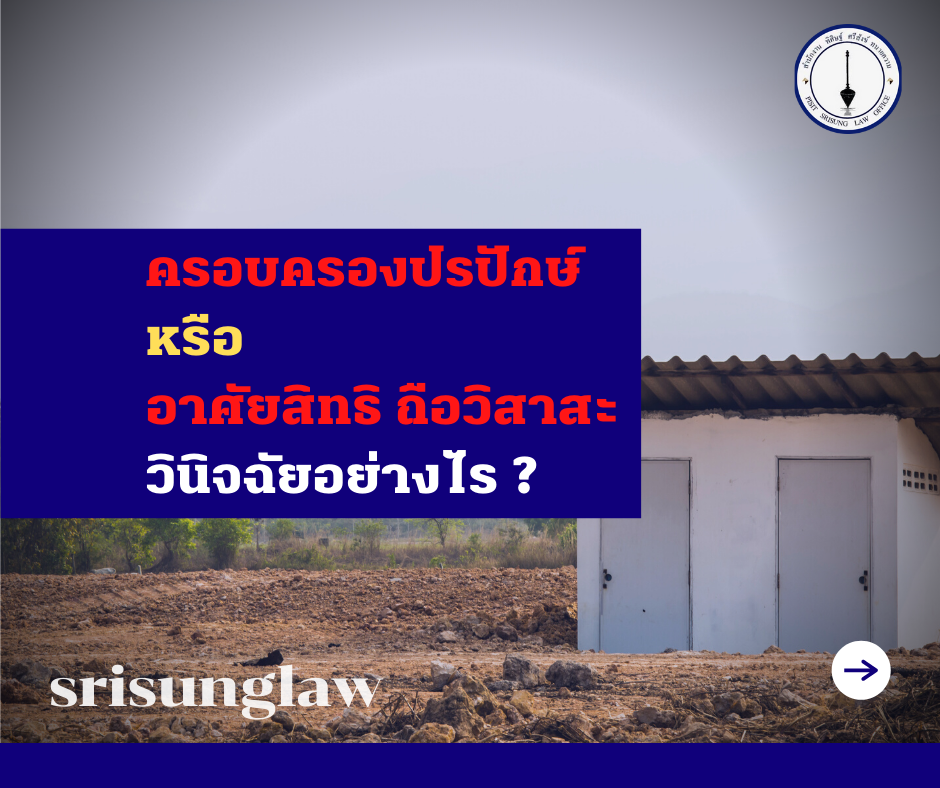
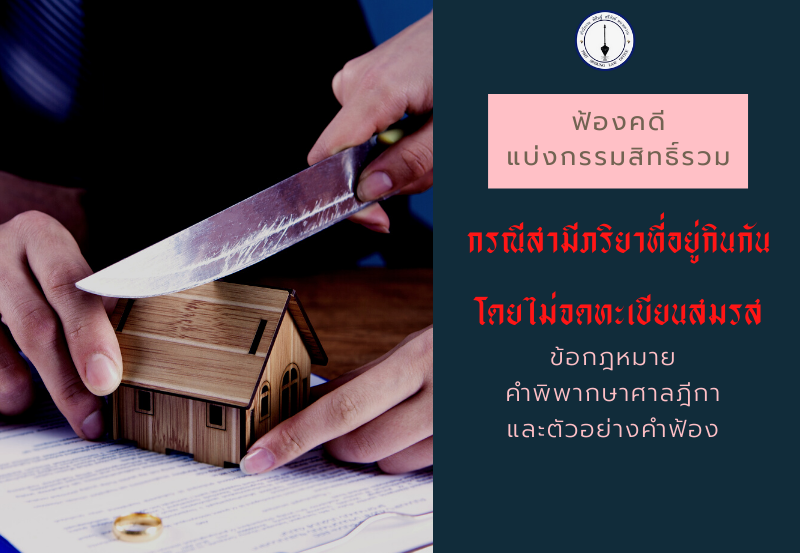
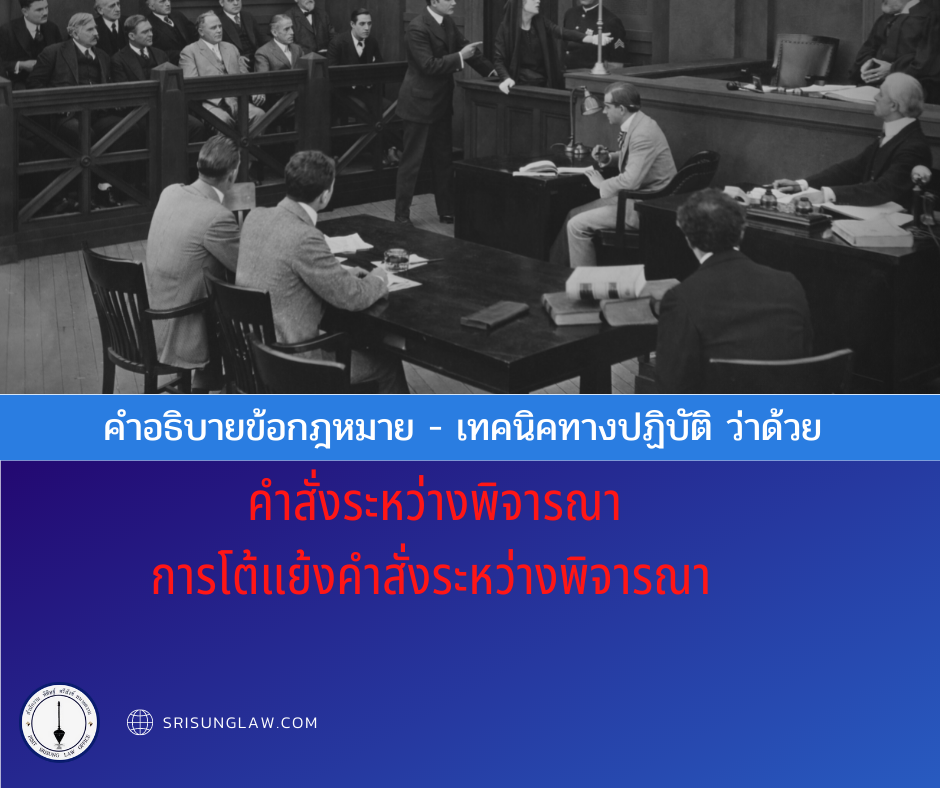
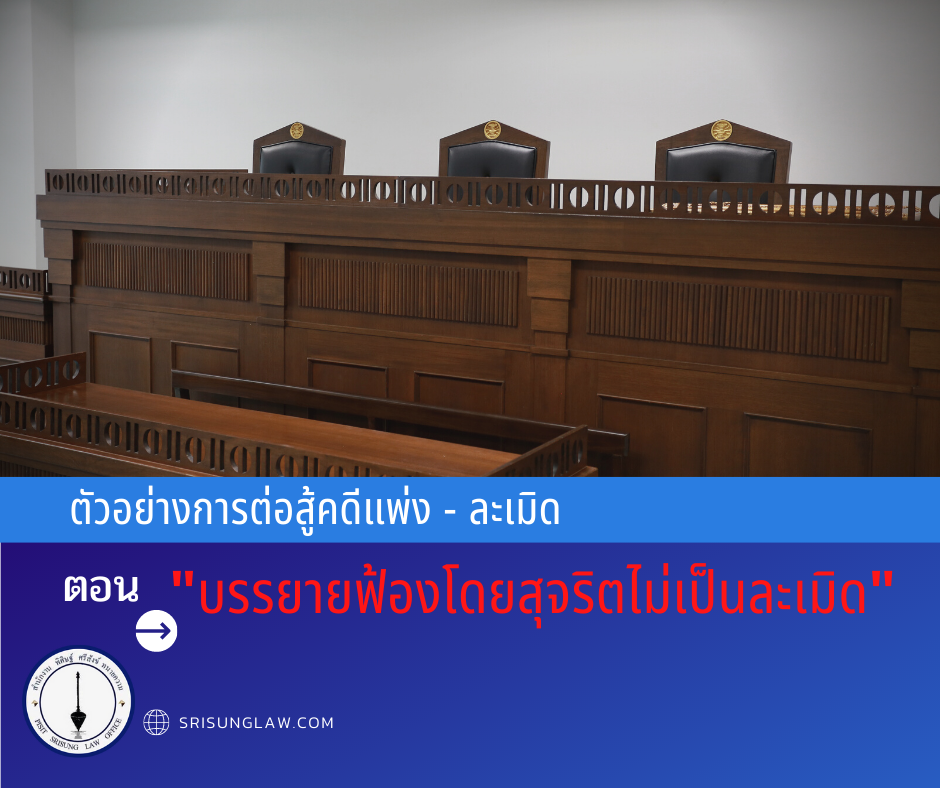
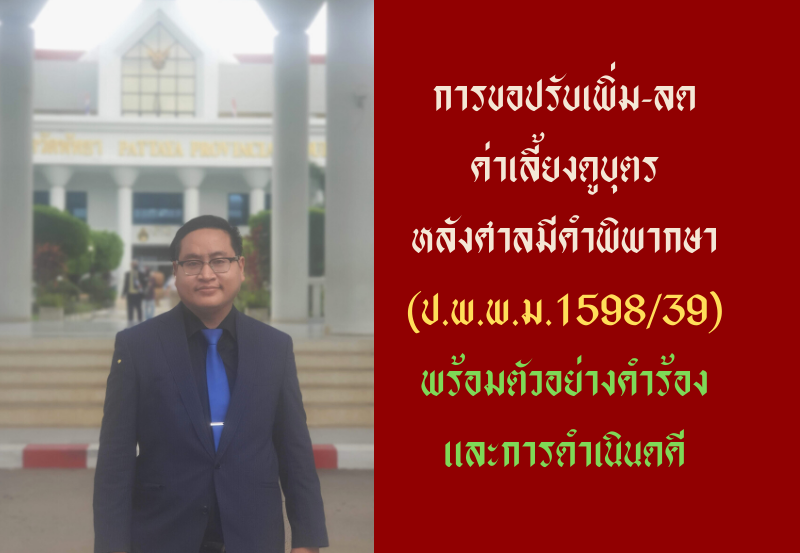
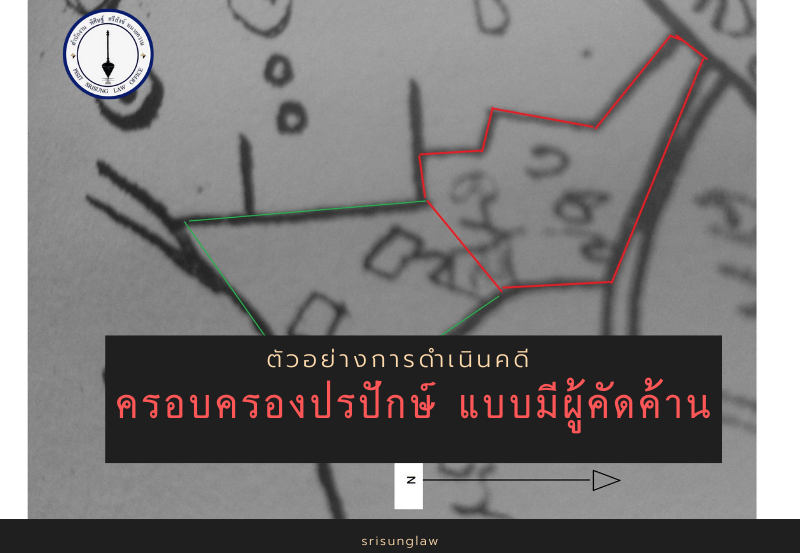

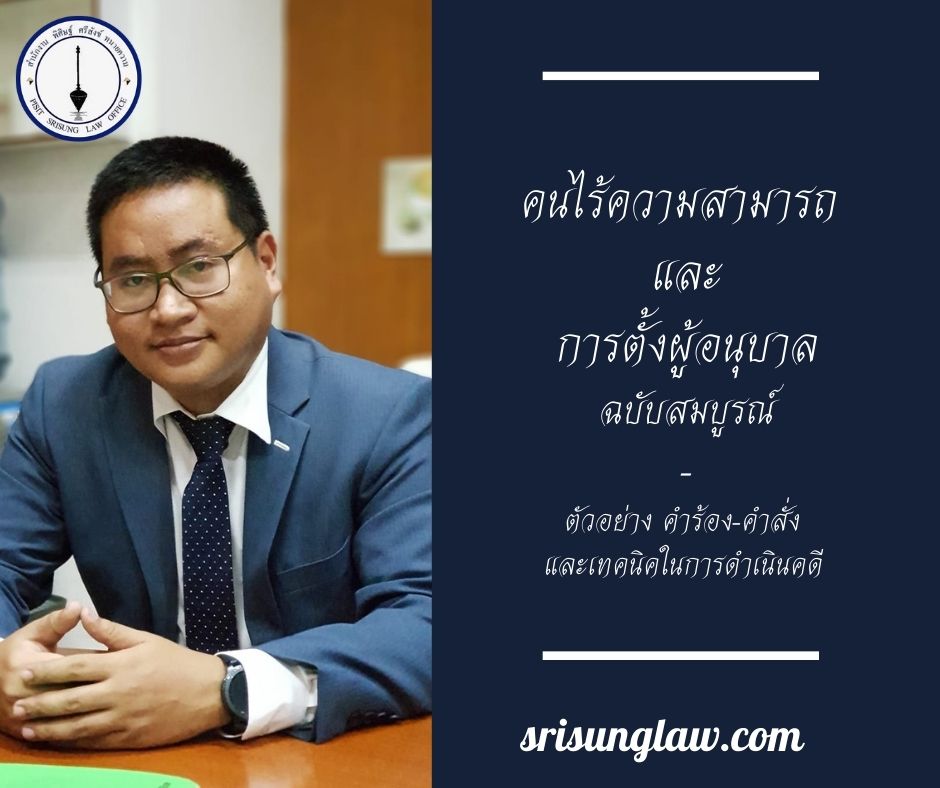

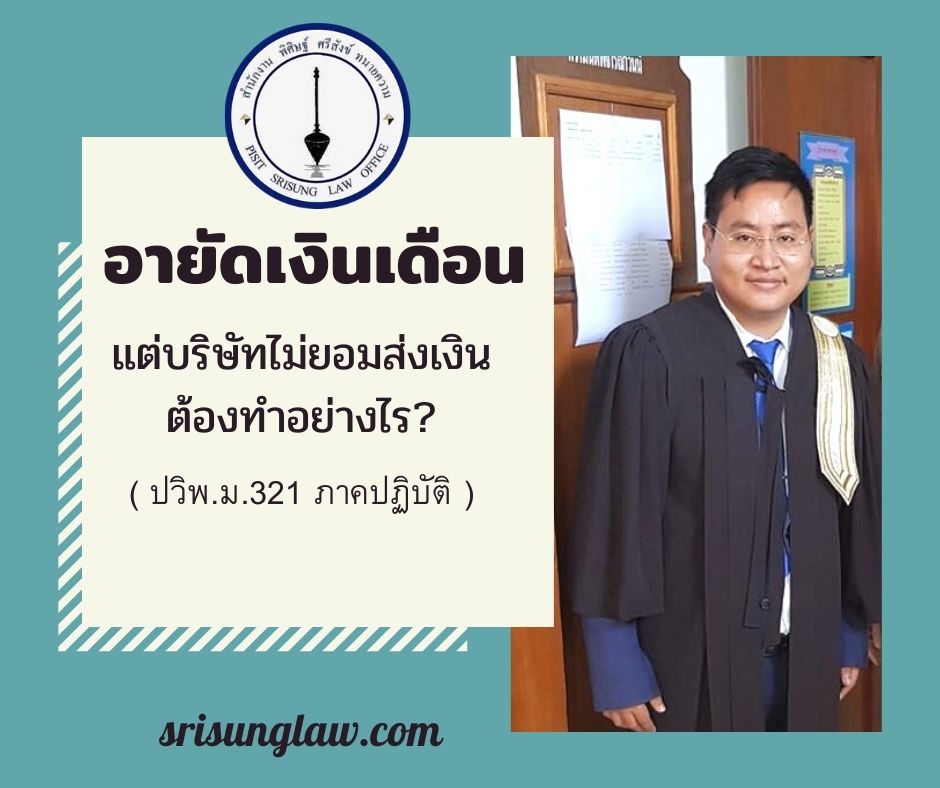
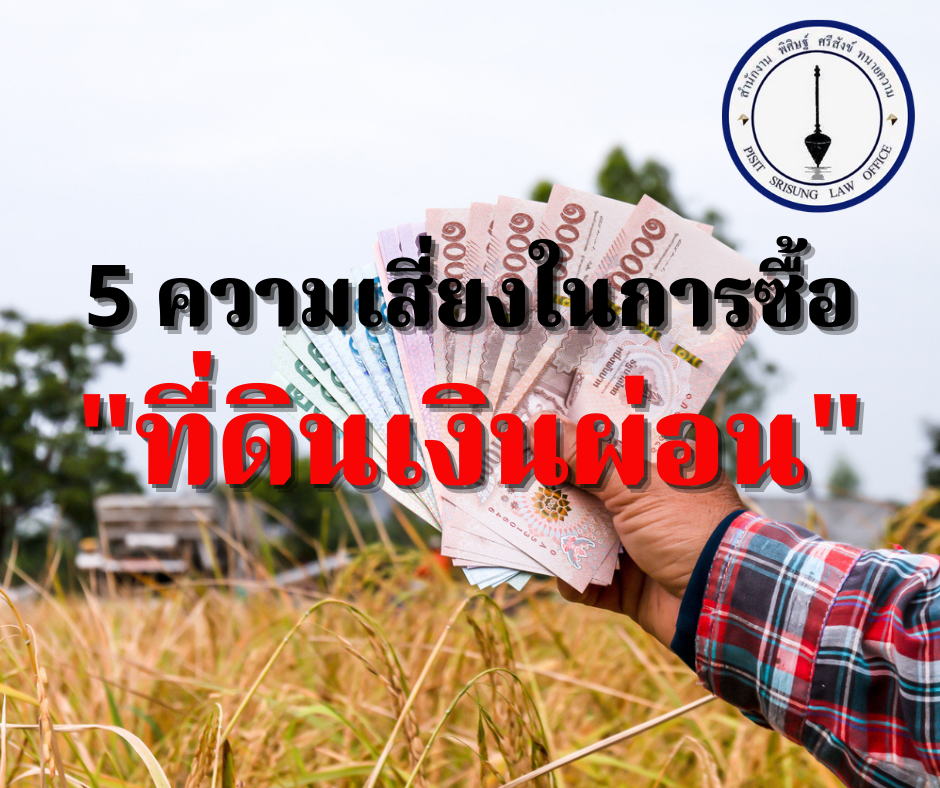
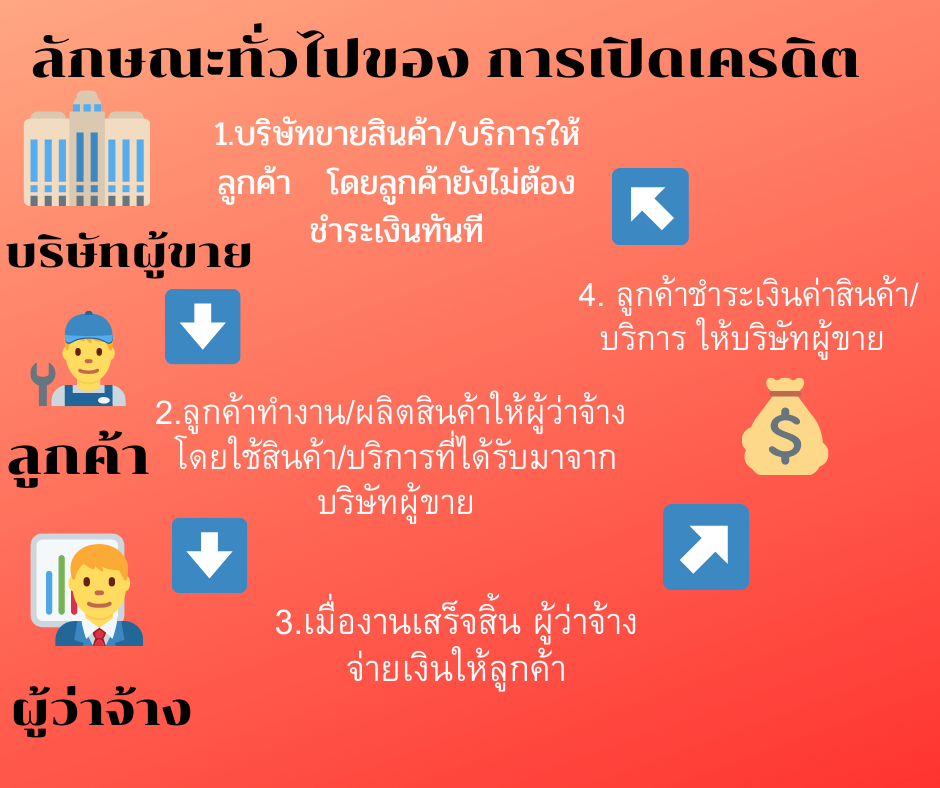





24 thoughts on “Possessing an enemy or relying on rights and holding privileges – how to distinguish? Revealing 3 principles that are frequently found in Supreme Court decisions.”